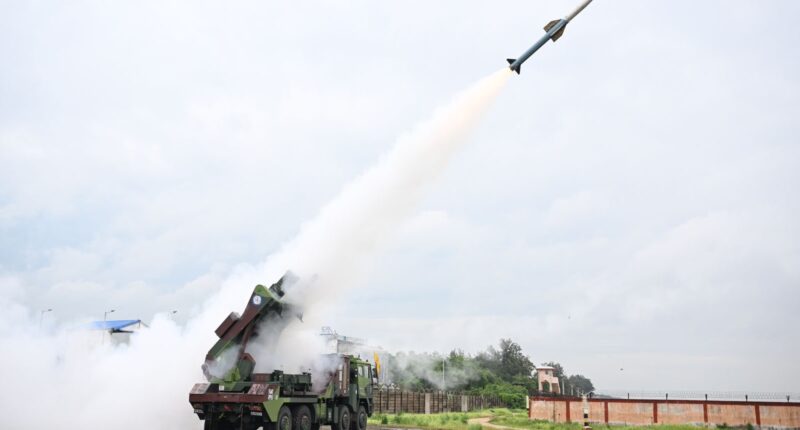
India’s IADWS integrates quick-reaction missiles, short-range interceptors, and a high-energy laser to counter diverse aerial threats with precision.
India’s Defence Research and Development Organisation (DRDO) has carried out the maiden flight test of its Integrated Air Defence Weapon System (IADWS), a homegrown shield that blends missiles with a directed-energy laser.
The multi-layered network links quick reaction surface-to-air missiles, very short-range interceptors, and a high-energy laser to counter a wide spectrum of threats.
The laser component adds a new dimension, enabling swift and rapid engagement of small, fast, and low-flying targets.
In its debut over Odisha’s coast in eastern India, the IADWS simultaneously tracked and destroyed two unmanned aerial vehicles (UAVs) and a multicopter drone flying at different altitudes.
“This unique flight test has established the multi-layered air-defense capability of our country and is going to strengthen area defense for important facilities against enemy aerial threats,” said Defense Minister Rajnath Singh.
Protecting Indian Airspace
The IADWS is an addition to India’s growing arsenal of air defense systems, capable of taking down a variety of enemy aircraft and UAVs to protect Indian skies.
It joins the Akash Missile System, which is built to take down fighter jets and ballistic missiles. Reports claim that it can track 64 targets while capable of attacking 12.
For India’s navy and army, the Barak-8 comes equipped with a “multi-mission” radar and interceptor missiles that have a range of 70 kilometers (43 miles).
Just this year, the DRDO has accelerated the development of its ballistic missile defense system, a missile interception platform with a range of 2,000 kilometers (1242.7 miles). This comes amid growing tensions with Pakistan.